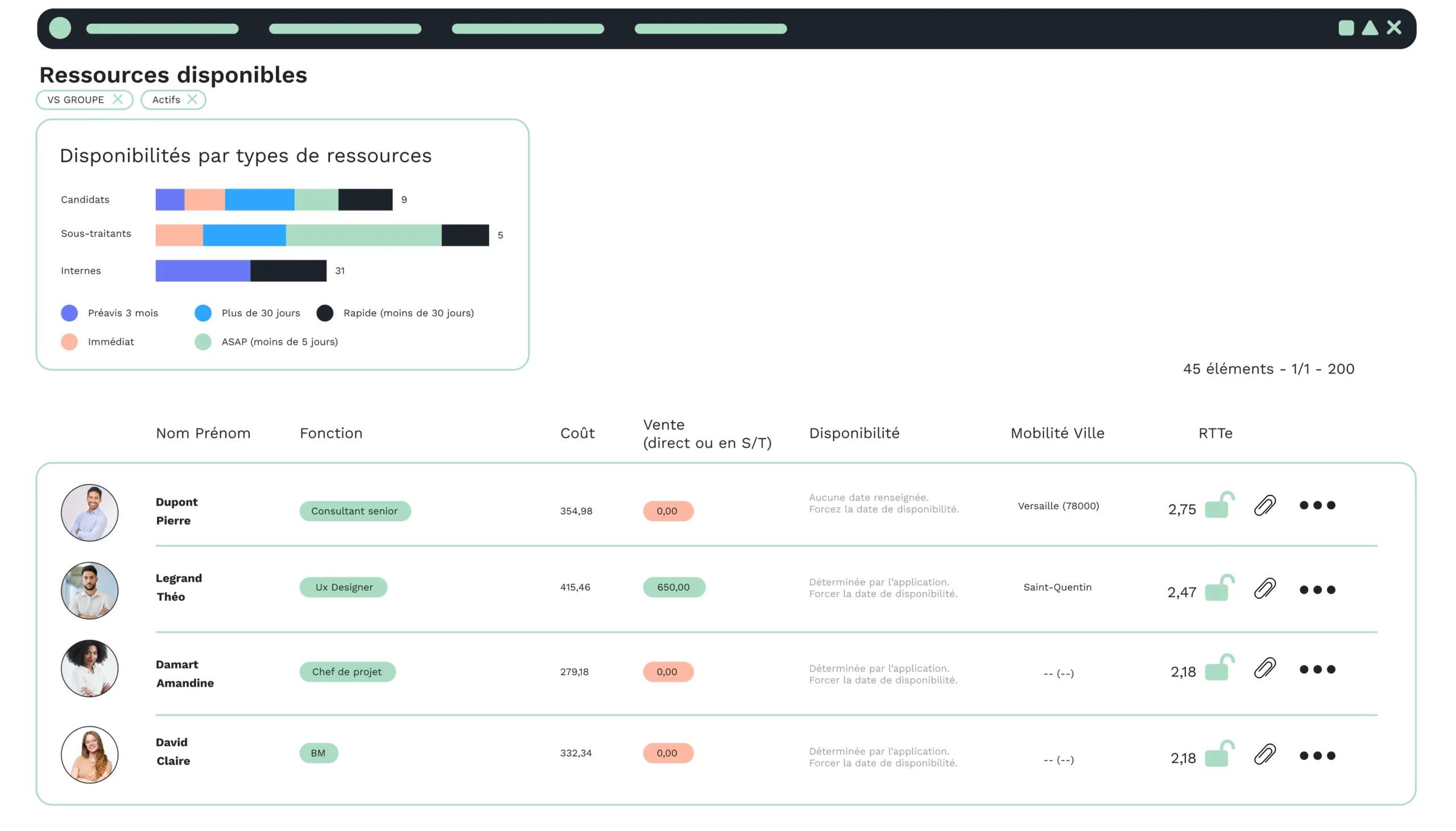Whatever its size, to remain competitive and therefore sustainable, an IT services company needs to be efficient.
This involves :
- Monitor targets
- Assessing performance
- Take stock of the situation in figures
- Supporting important decisions
To help you gain perspective on your IT services company’s results and facilitate decision-making, discover 8 performance indicators for effective management of your IT services company .
1. Sales figures
Sales are a measure of a company’s ability to generate value.
When analyzing this performance indicator, we need to distinguish between several elements:
- Invoiced sales, corresponding to all invoices;
- Revenue from services rendered;
- The invoice to be issued corresponds to services performed but not yet invoiced;
- Deferred revenues, corresponding to services not performed but invoiced.
2. Average Daily Cost (ADC)
The ADC provides a vision of the company’s profitability. It corresponds to what the employee costs the company every day.
ADC employee = ( [salaire annuel brut + charges + Montants des divers avantages sur un an] / number of potential working days per year) X structure load factor.
For an external employee, his daily purchase price is his CJM.
3. Average daily rate (ADR)
The ADR corresponds to the average amount billed to IT services companies’customers for one day.
The rate must cover the ADR to avoid losses.
ADR = invoiced sales over the selected period / number of days produced over the period
4. Excluded Leave Activity Rate (ELAR)
Also known as Staffing Rate, ELAR gives an overview of an IT services company’s operational performance. Excluding absences, this rate is relatively homogeneous for each month of the year.
ELAR = (Number of days produced) / (Number of potential days – (CP + RTT))
5. Leave-inclusive activity rate (LIAR)
The LIAR keeps track of absences and gives an activity rate that can fluctuate much more than the ELAR for months with many absences (summer vacations, for example).
LIAR = Number of days produced / Number of potential days
6. The margin
The margin is used to analyze the money earned by the company through its services.
Gross margin = ADR – ADC
The margin rate will be: (ADR – ADC) x 100 / ADC
7. Outstanding receivables
Outstanding receivables give an overview of the average number of days overdue for payment of your issued invoices and the total amount of your outstanding receivables. Excessive customer receivables can have a negative impact on an IT services company’s growth, since they worsen its cash position.
8. Workforce
The company’s employees also have an influence on IT services company’s profitability, since they represent a non-negligible cost.
Several indicators can be used to assess workforce-related performance:
- Turnover
- Average seniority
- The proportion of productive and non-productive employees
Manage your IT services company with ERP, an indispensable tool
Making decisions based on reliable data is very important for your IT services company.
If you use Excel-type spreadsheets, or several independent management tools, several problems may arise:
- Scattered data
- Exploiting this data becomes complex
- Your IT services company’s performance analysis is biased
There’s a solution to these problems: ERP software.
Specially designed for consulting companies, IT services company, this software will adapt perfectly to your activity.
What’s more, it allows you to :
- Centralize all your data in 1 single software package
- Manage all types of data (CRM, HRIS, accounting, etc.)
- Reliable, automatically updated data
- Access dashboards, reports and performance indicators
Discover the power of our SaaS ERP VSActivity and all its features during a demo!






